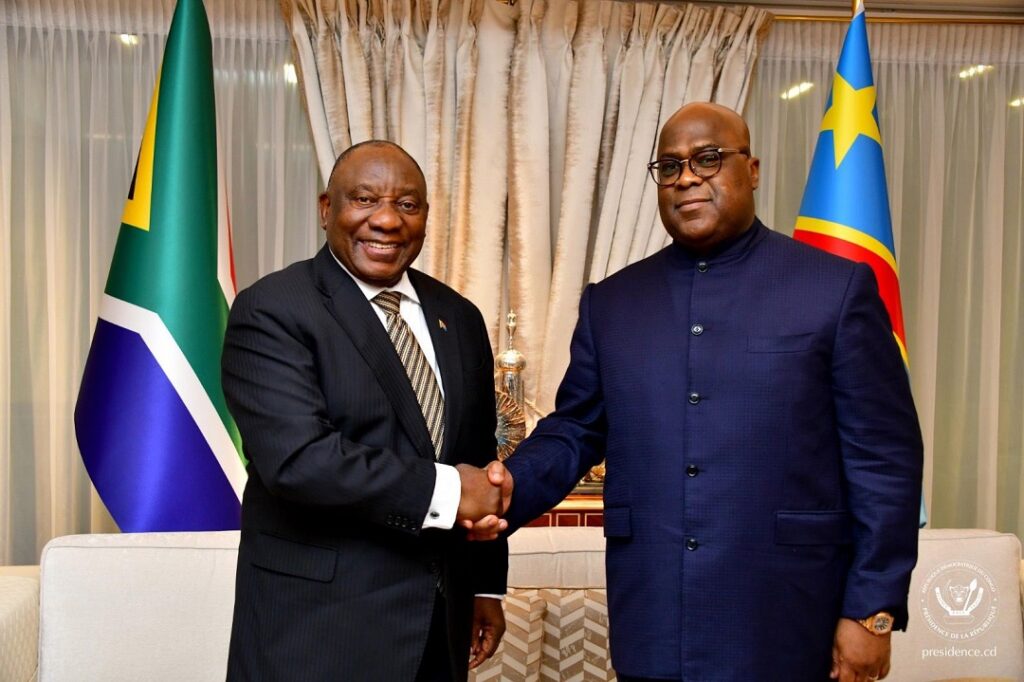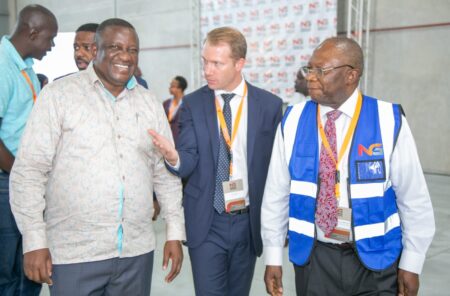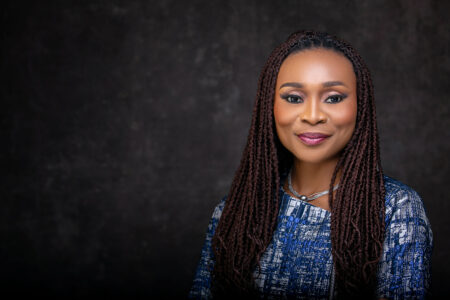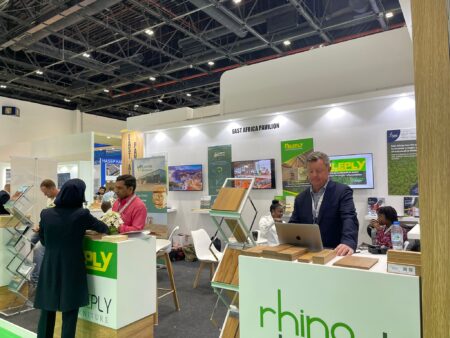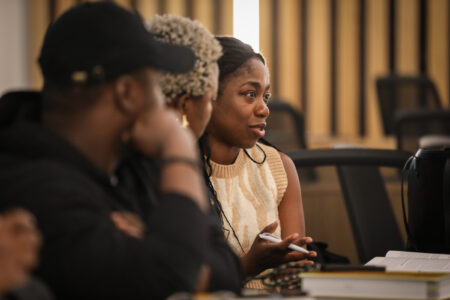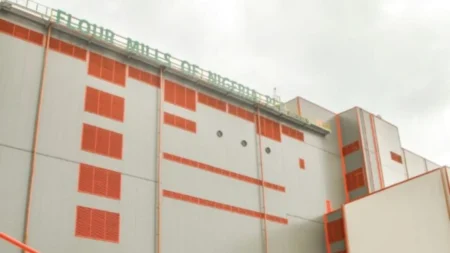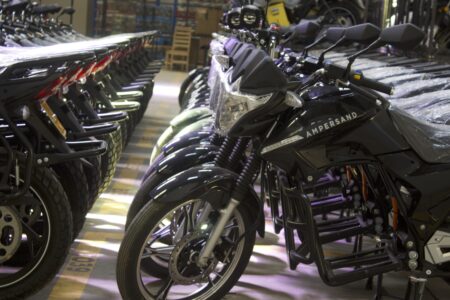- Presidents Cyril Ramaphosa and Felix Tshisekedi agree on exploring electric batteries deal during a bilateral business forum in Kinshasa.
- Another agreement will see the revival of the 11GW Inga 3 hydropower project on the Congo River.
- President Ramaphosa terms DRC as the “beating heart” of Africa in a meeting with Tshisekedi and hundreds of industrialists.
President Cyril Ramaphosa has won big in his talks with his Democratic Republic of the Congo (DRC) counterpart where a deal on the manufacture electric batteries will be explored.
Presidents Felix Tshisekedi and Ramaphosa undertook to ensure the implementation of various agreements concluded during the 12th session of the Joint Grand Committee.
DRC’s lithium vital in electric batteries
In light of the DRC’s abundant lithium mineral reserves, the production of electric batteries is an excellent area of cooperation between South Africa and the DRC.
Lithium helps make lithium-ion batteries, which are key cog of the fast rising electric vehicles industry. Analysts project that electric vehicles market will cross $850 billion in 2027. Lithium is also widely used in powering the roughly $500 billion smartphone industry. Additionally, it makes portable electronics such as laptops, a market which is worth about $160 billion.
According to a 2021 BloombergNEF study endorsed by the United Nations on a unified African supply chain, making lithium electric batteries in the DRC would be more advantageous for the entire world.
According to the survey, constructing a 10,000 metric tonne cathode precursor factory in the DRC would cost $39 million. This is three times less expensive than what a comparable factory in the US would cost. A similar factory in China or Poland will cost around $112 million and $65 million, respectively.
Reviving the 11GV Inga 3 project on Congo River
Further, the Inga 3 project will also become a reality thanks to the fresh bilateral agreements. The World Bank supported Inga 3 project, which is located on the Congo River and aims to generate 11GW of power. The grand project was announced in 2013.
The bulk of the electricity from Inga 3 was set for export to South Africa and use in the mines in the eastern DRC. The World Bank left the project, nevertheless, claiming “strategic differences” in 2016.
Once complete, Inga 3 seeks to reduce the electricity deficit in both DRC and South Africa. “The World Bank is once again keen to get back involved in this project,” said Tshisekedi.
In return, Ramaphosa urged businesses operating in the DRC to expand into South Africa. The DRC, according to the president of South Africa, is the historical center of Africa and the “beating heart” of the continent.
“The DRC has an equally important role to play in the future of our continent, with its minerals propelling the new green industrial revolution.
“It is for this reason that we want to see more South African companies investing in the DRC, and likewise to see more Congolese companies investing in the South African economy,” Ramaphosa said on Thursday, July 6th.
DRC-South Africa Bi-National Commission (BNC)
He was speaking in Kinshasa during his working visit at the invitation of President Tshisekedi. In the tour, Ramaphosa co-chaired the Heads of State and Government section of the 12th Session of the DRC-South Africa Bi-National Commission (BNC) in Kinshasa.
Ramaphosa noted BNC underscores the importance of the relationship between the two economies. Accompanied by over 10 ministers, Ramaphosa told the delegates that the visit was taking place amid challenges.
He cites the COVID-19 pandemic’s consequences as well as rising food and fuel costs as a result of the Russia-Ukraine war. He claimed that these issues, along with climate change, have a detrimental effect on businesses and communities.
“And yet even though we face some challenges, we are a continent brimming with potential and opportunity. From North Africa to South Africa, from East to West, and here in Central Africa, we are favoured with vast endowments.”
He emphasized to the officials the countries’ rich mineral and fossil fuel reserves. They also have a lot of land that is arable and a lot of water.
“We have a diverse terrain that supports all manner of infrastructure development, including renewable energy. And yet these vast endowments are not producing favourable economic and developmental outcomes evenly across the continent.”
However, he claimed that because both countries saw the prospects, they were meeting with hundreds of businesses.
The South African corporation GUMA Africa offered DRC 300 agricultural tractors at the conclusion of the DRC-RSA business meeting. The action will boost the 145 territories’ Local Development Program. The firm will provide additional 5900 construction vehicles for road construction and restoration in the DRC.
ANAPI wooing investors into DRC
The mineral-rich DRC has been actively courting investors worldwide ever since President Tshisekedi came to office. The National Agency for the Promotion of Investments (ANAPI) plays a vital role in wooing investors.
ANAPI aims at streamlining the investment process and offers investment facilitation services. Additionally, the organization helps new foreign investors and increases transparency in procedures. ANAPI is reassuring stakeholders that DRC holds vast potential and their investments will pay significant returns.
Mining, trade, and agriculture are among the priority investment sectors on ANAPI website. In agriculture, ANAPI is asking investors to harness over 80 million hectares of arable land. Of this farmland, about four million hectares are irrigable.
“They (provincial) governors can give you land. So, you don’t need to pass by anyone else. They have authority from the Constitution,” ANAPI Managing Director Anthony Kamole said during the Annual Investment Meeting in Abu Dhabi in May.
Given its massive market size of nearly 100 million people, geographic location, and advantageous investment rules, DRC is delivering enormous returns on investment in all these industries. ANAPI currently encourages ethical mineral sourcing.





